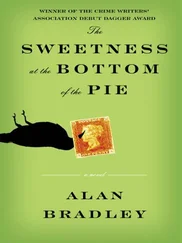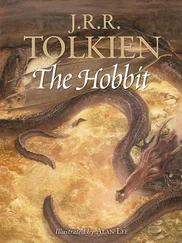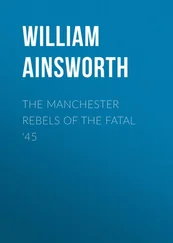And with the coming of a pandemic, yet another set of limits threatens to exact a tremendous price. These are the bounds of the emergency planning we’ve done, the limitations of our downsized health-care system and outsourced drug industry, even potentially of our power supply and food and water. But that’s a story history will write.
Now to Asia, where a fatal strain has raised its baleful challenge.
CHAPTER ONE
The Revenge of Begu Ganjang
Dowes Ginting, the most wanted man in Sumatra, lay dying. He had abandoned the Indonesian hospital, where he had seen his family succumb one after another, and fled deep into the mountains, trying to outrun the black magic, seeking refuge in a small, clapboard home beyond the cloud-shrouded peak of the Sinabung volcano. For four straight nights, a witch doctor hovered above him, resisting the evil spell.
The medicine man mumbled the unintelligible words of an incantation. He doused Dowes with cooking oil and massaged his tormented muscles. He placed a hefty chunk of betel nut in the corner of his own mouth and chewed, his lips staining red from the juice of the mild stimulant, and then, with the precision of a surgeon, spit the concoction gob by gob over his patient’s head, face, and chest and along his arms and legs. To relieve the surging fever, the witch doctor applied a pasty preparation of pounded rice and ginger called beras kencur to the man’s damp flesh.
Dowes, a wiry thirty-two-year-old with a mop of dark hair and a whisper of a mustache, seemed at times to improve. His breathing grew less labored and his coughing less wrenching. At these moments, Dowes would hope his affliction was nothing more than the respiratory troubles he sometimes had as a teenager. But other times his condition would suddenly deteriorate. The witch doctor had to repeat the treatment several times in the course of a single night. He even lit some kemenyan , a pungent incense made from the balsamic resin of local trees and burned only when battling the most intractable spirits.
When the nighttime therapy was finished, Dowes would retire to a house just next door on a rise overlooking the village of Jandi Meriah. While the witch doctor’s home was little more than a shack with a faded white exterior and rickety brown shutters, the neighbors’ was more substantial. It had a jolly pink tile facade with a green tile terrace and even a working toilet. It belonged to relatives of Dowes’s wife, and for the four days he sheltered there, they looked after him, washing him and cooking his meals. Mostly, he slept. But when he felt ambitious, he sat on the terrace and looked down on the rusting, corrugated metal roofs of the village and the tall stands of coconut palms.
It was to this remote hideaway that Dr. Timothy Uyeki tracked Dowes in May 2006. Uyeki had been dispatched to Indonesia by the World Health Organization after the agency’s office in the capital, Jakarta, had put out an urgent call for reinforcements. Influenza specialists suspected that Dowes was carrying a novel flu strain. And he was on the loose.
Since bird flu had first jumped the species barrier from animals to humans in Hong Kong nine years earlier, the strain had infected more than two hundred people, yet it had reassuringly shown little aptitude for spreading from one person to another. Now the outbreak ravaging this one Sumatran family suggested the contrary. It was the largest cluster of confirmed bird flu cases in the world to date and the strongest proof yet that the virus could be passed among people. If the virus that Dowes was harboring had mutated into a more transmissible form, tens of millions of people worldwide could die.
Investigators would ultimately conclude that the Sumatra outbreak was not sparked by an epidemic strain. The toll would be confined to the Gintings. But the outbreak was the closest thing yet to a dry run for an emerging epidemic.
The experience was sobering. This was more than just a stress test of the world’s emergency response. The episode, more generally, would cast doubts on some of the biggest bets humanity has been placing, raising profound questions about whether the WHO formula of brilliant scientists, courageous investigators, and modern technology was potent enough to break history’s inexorable cycle of pandemics.
In the tight-knit world of highland Sumatra, it did not take long for Uyeki and a pair of Indonesian colleagues to trace the fugitive through his extended family, catching up with Dowes three days after he slipped into Jandi Meriah. Uyeki entered the front room of the hilltop refuge and spied Dowes lying by the window. He was sprawled on a thin, pink mattress against the wall, chest bare, his head propped up on a pair of pillows. His eyes were open. They were dark and sunken, and beneath them hung heavy bags left by the long nights of misery and magic. Above him, the curtains were open. Morning sunlight filled the room.
The patient’s wife and several other family members took seats on a red rug along the far wall and eyed their visitors suspiciously. Uyeki sat down by the door. He started by offering his sympathy for the losses they’d already suffered. He explained he was looking for information. He wanted to help. It was a hard sell. Outsiders, even fellow Indonesians, were a rare sight in the village. They were viewed with distrust, even hostility.
Uyeki, an American, was an old hand at this kind of fieldwork. During his career as an epidemiologist with the U.S. Centers for Disease Control and Prevention in Atlanta, he had responded to Ebola in Africa, SARS in Asia, and anthrax attacks in Washington.
But flu was his passion. He had signed on to CDC’s influenza branch in 1998 and was instantly dispatched to investigate an unusual summertime outbreak on cruise ships in Alaska that sickened thousands of tourists and tourism workers. In 2002 he headed off with an international team to the island nation of Madagascar, where thirty thousand villagers had come down with a baffling respiratory infection and hundreds had died. Though it was never publicized, some communicable disease specialists at WHO feared that at that very moment a global flu pandemic was hatching, not somewhere in Asia but in that African country’s remote rural highlands. Uyeki pitched his tent there and camped for five days in continuous rain, collecting samples from the sick. The test results were ultimately reassuring, revealing that the outbreak was caused by an ordinary seasonal flu strain, exacerbated by Madagascar’s crowded conditions, malnutrition, and cold, wet winter.
Uyeki is evangelical about flu. He calls it the Rodney Dangerfield of diseases. He is outraged that for years the virus was unable to garner much attention from researchers and policy makers despite its proven ability to kill tens of thousands of Americans each winter and potentially millions in a pandemic. He is emphatic about this point, as he is about many things. He is perpetually engaged and chronically restless. He keeps his sleeves rolled up and sneakers on his feet. Even into his late forties, this abundant energy, coupled with his intense brown eyes and dark, uneven bangs, lent him a boyish aspect.
Uyeki is also a practicing physician, a trained pediatrician, and, as he sat in that doorway in Sumatra, he understood that he was dealing with more than just the devilish twists of microbiology. He also had to attend to stigma and loss. “These were people who had already suffered a great tragedy,” Uyeki later recalled. “This was a family that was trying to grieve. You needed to be empathetic and sympathetic. You feel a little reluctant to keep pushing.”
As he spoke with the relatives, Uyeki tried to make eye contact, hoping to win their trust. But out of the corner of his eye he also studied Dowes. The ailing man had pulled himself into a sitting position. There was something odd about his breathing. His chest muscles seemed to be working too hard, too fast. Before long, Uyeki fell silent. He looked down at his watch. Then, for a full minute, he observed Dowes, counting each breath. A healthy man would breathe about fourteen or sixteen times in a minute. But Dowes exceeded that in half the time. Uyeki counted up to thirty-six. He knew then that the patient had pneumonia. It was almost certainly bird flu. But he’d need a specimen of virus to be sure.
Читать дальше











